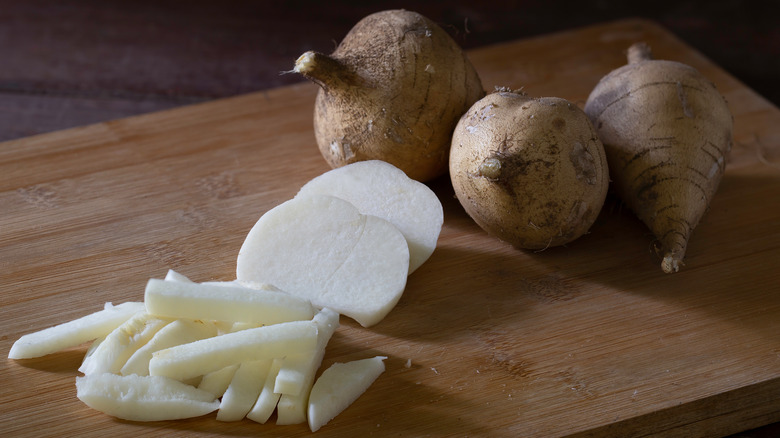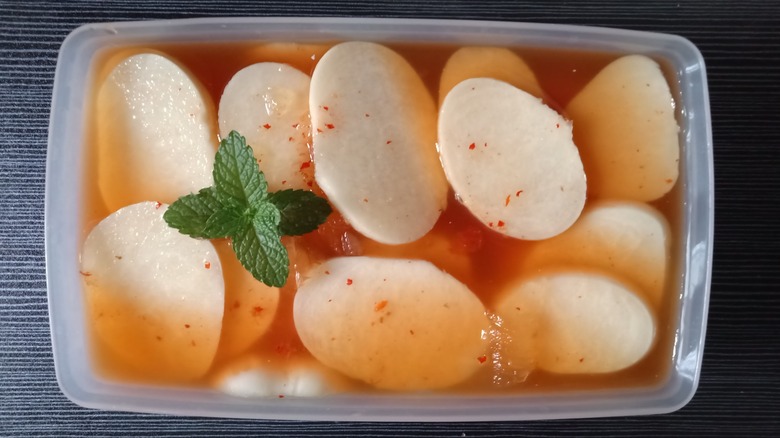How To Get A Feel For The Most Ripe Jicama
Crunchy, juicy, refreshing, and mildly sweet, jicama is a root vegetable that doesn't get the recognition it deserves. Not only is it nutritious, providing plenty of fiber and vitamin C, but you can also enjoy eating it in a variety of ways. Peel and chop jicama into strips and eat the pieces raw with your favorite dip for a healthier snack, or add them to your salads and fresh spring rolls to give them an extra delectable crunch. Pickle them to have some crispy, tangy filling for your sandwiches. Boil and mash them like you would the similarly starchy potato. Turn them into fries, too, by boiling peeled jicama strips, drying them, and then flavoring them with your favorite seasonings before placing them in the air fryer.
To enjoy this vegetable at its best, you must buy it at its ripest. Ripe jicama feels firm with a smooth, light-brown skin that is generally free of blemishes, cracks, discoloration, mold, and soft spots. Avoid buying either the small ones, which could still be unripe, or the oversized ones, which are likely to have dry and fibrous flesh; a medium-sized jicama that weighs under four pounds is best. Check it for any sour odor, too, which would indicate spoilage; ripe jicama would have a sweet, faintly floral aroma. Its skin must be easy to peel to reveal white flesh that has a similar texture to apples or Asian pears.
How to store and preserve jicama properly
Although generally available throughout the year, jicama's peak season begins in November or December, lasting through the spring. Since it thrives best in tropical climates, the ones sold in the U.S. are mostly imported from Mexico, where it is a native crop, and from Central and South America. Should its appetizing crunch and refreshing flavor vault jicama to the top of your list of favorite vegetables, learn how to store it properly so you enjoy it at its best longer.
Fresh jicama remains good to eat for up to 3 weeks when stored unpeeled in the crisper drawer. Although its flesh doesn't immediately lose its crispness or change color when exposed to air, once cut, you must encase it in plastic and place it in the refrigerator so it doesn't dry out or absorb more moisture, which would hasten its deterioration. Make sure to consume it within a week.
Pickling is another way of making jicamas last longer. As delightful as it is when eaten fresh, this vegetable can be a zesty side dish or topping when pickled. Peel and julienne it along with carrots, unripe papayas, or green unripe mangoes. Then store them in sealed jars for about 5 days, fully immersed in a mixture of coconut vinegar, sugar, slivers of onions, minced garlic, ginger slices, and chiles. Enjoy the crunch and the refreshing tropical hints of this sweet, tangy, and spicy side dish with grilled or fried meats.

